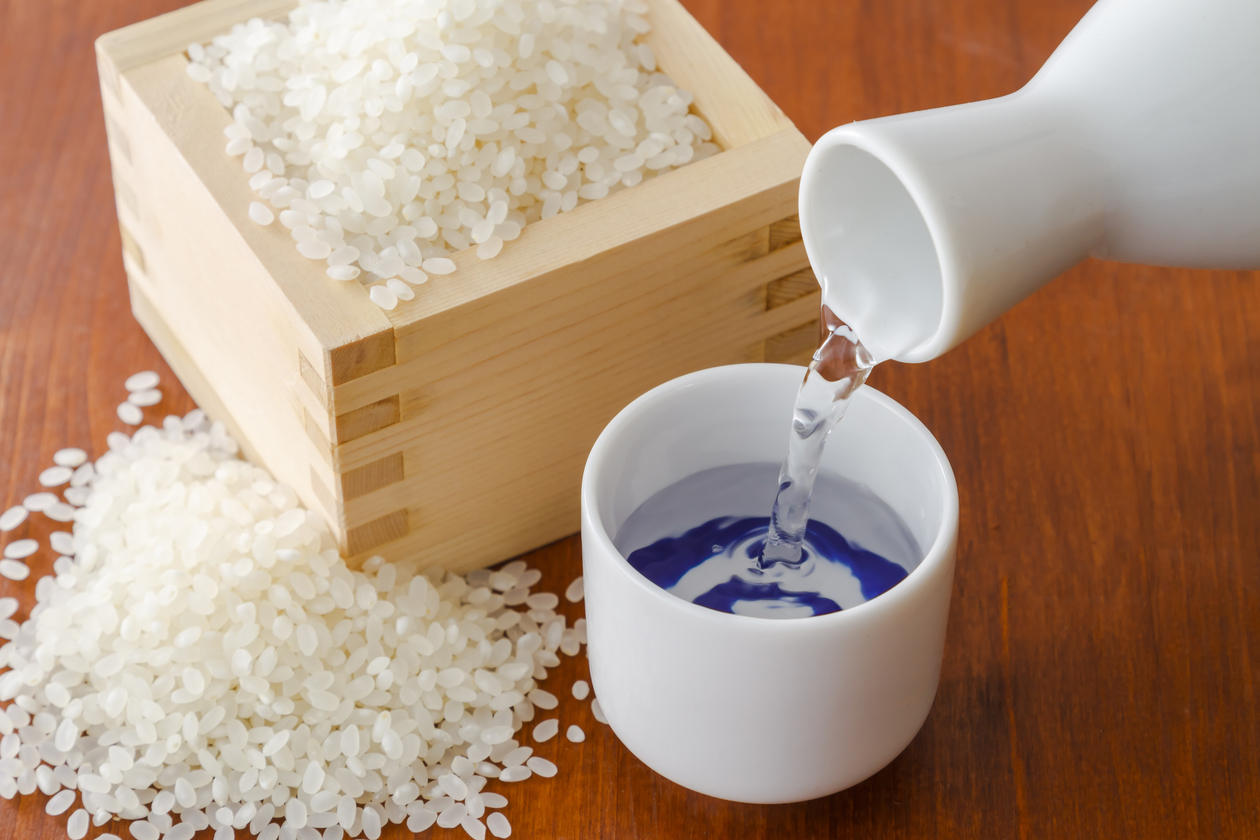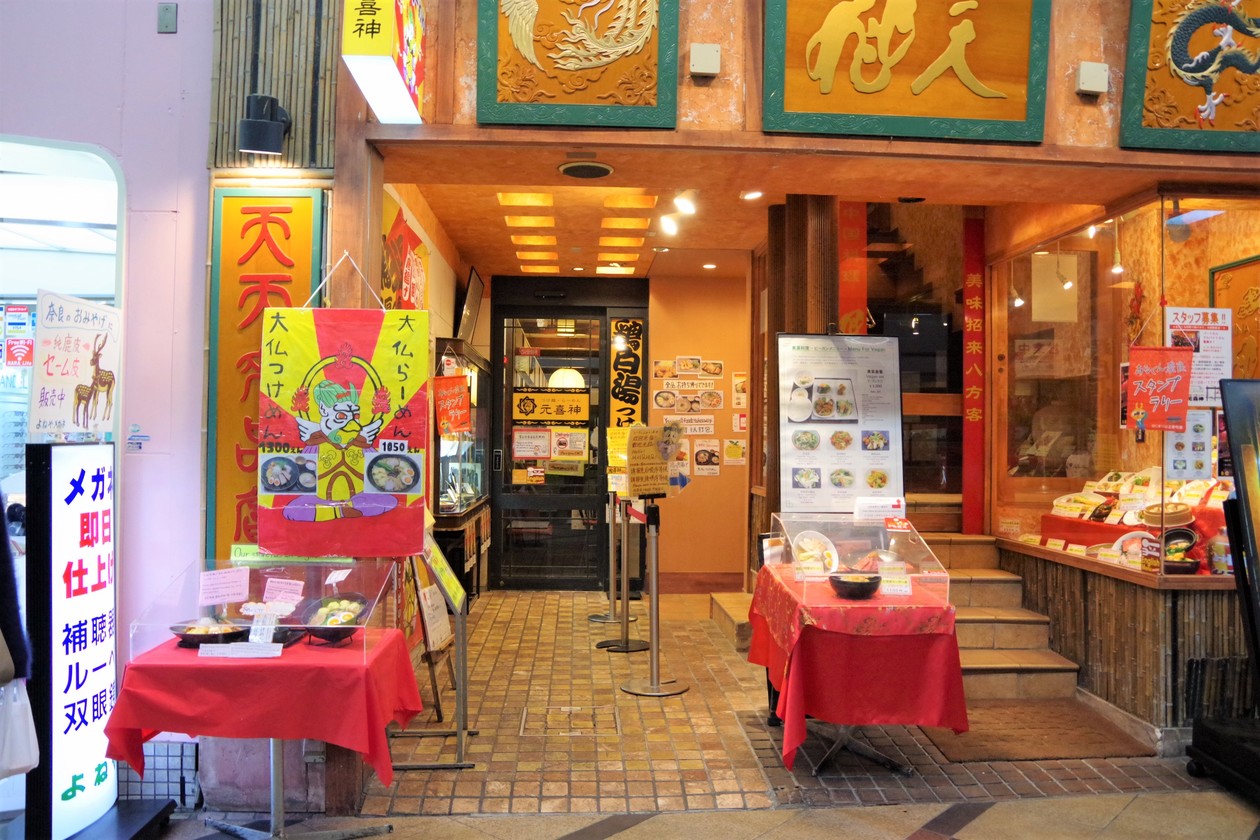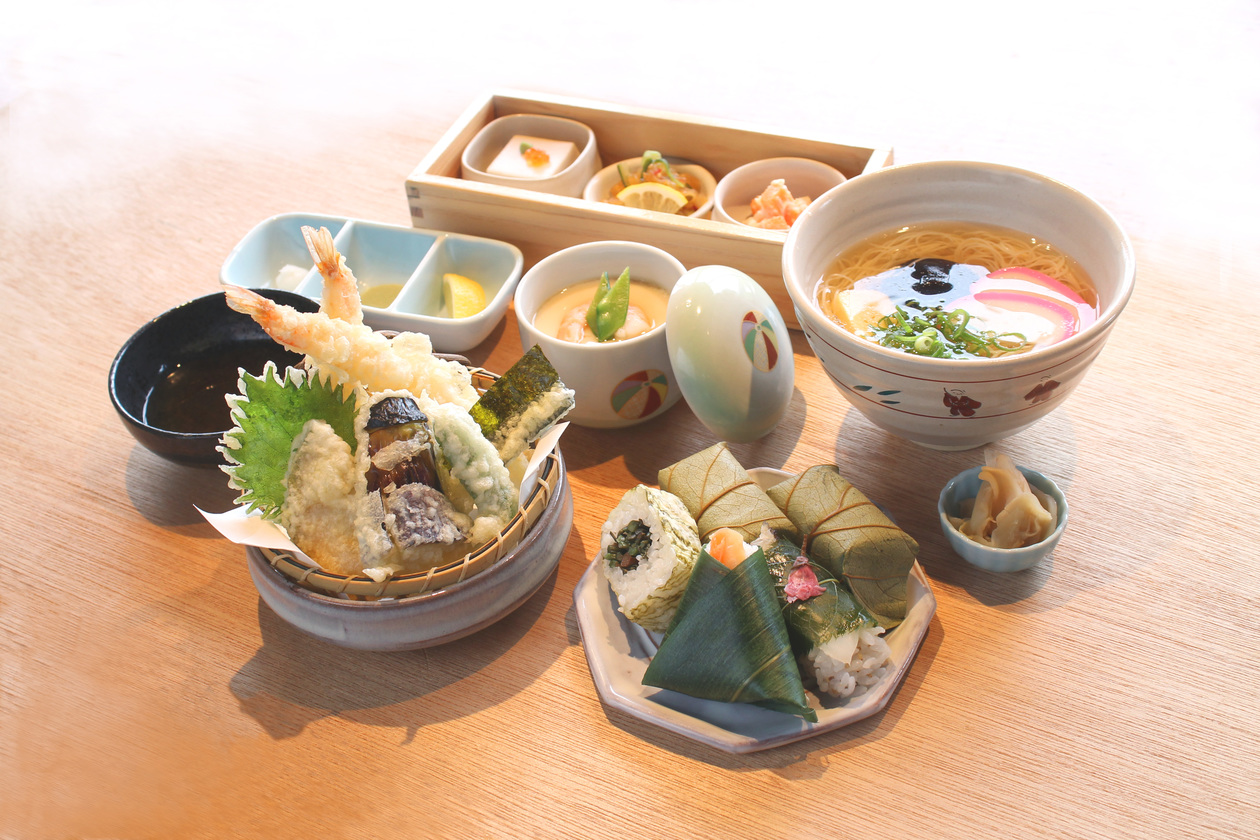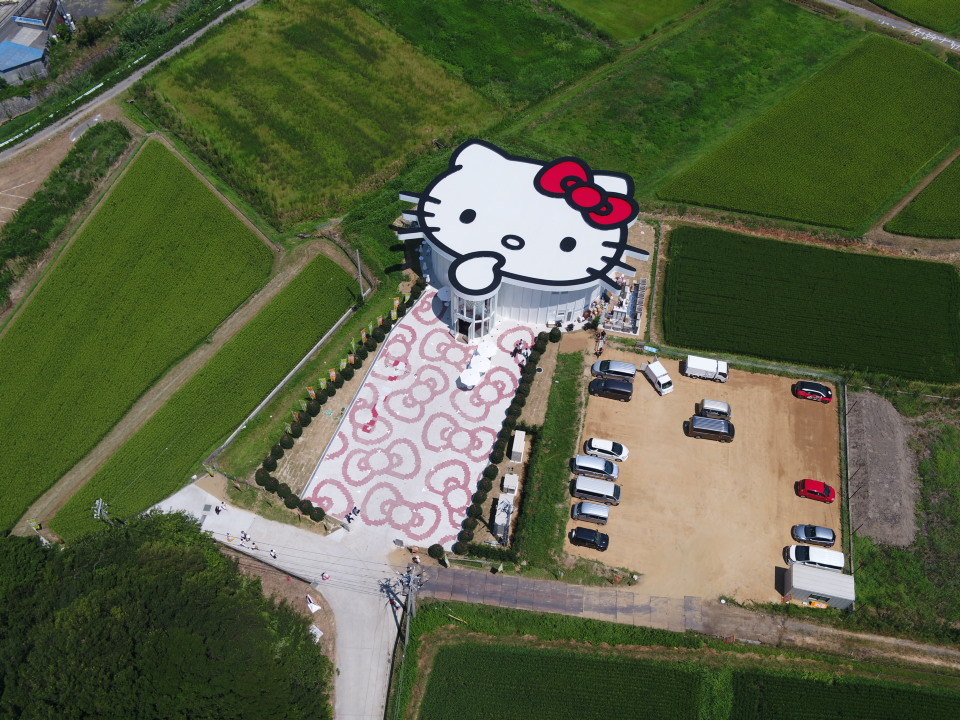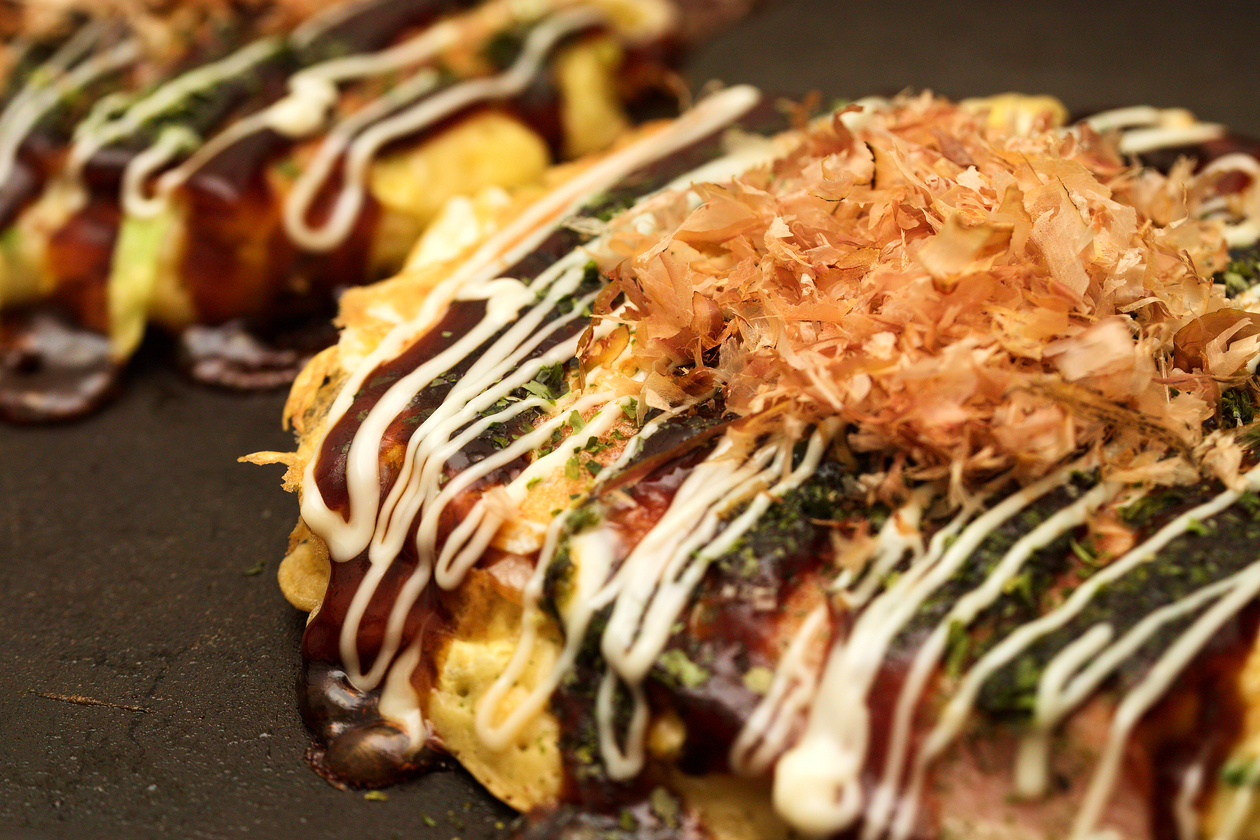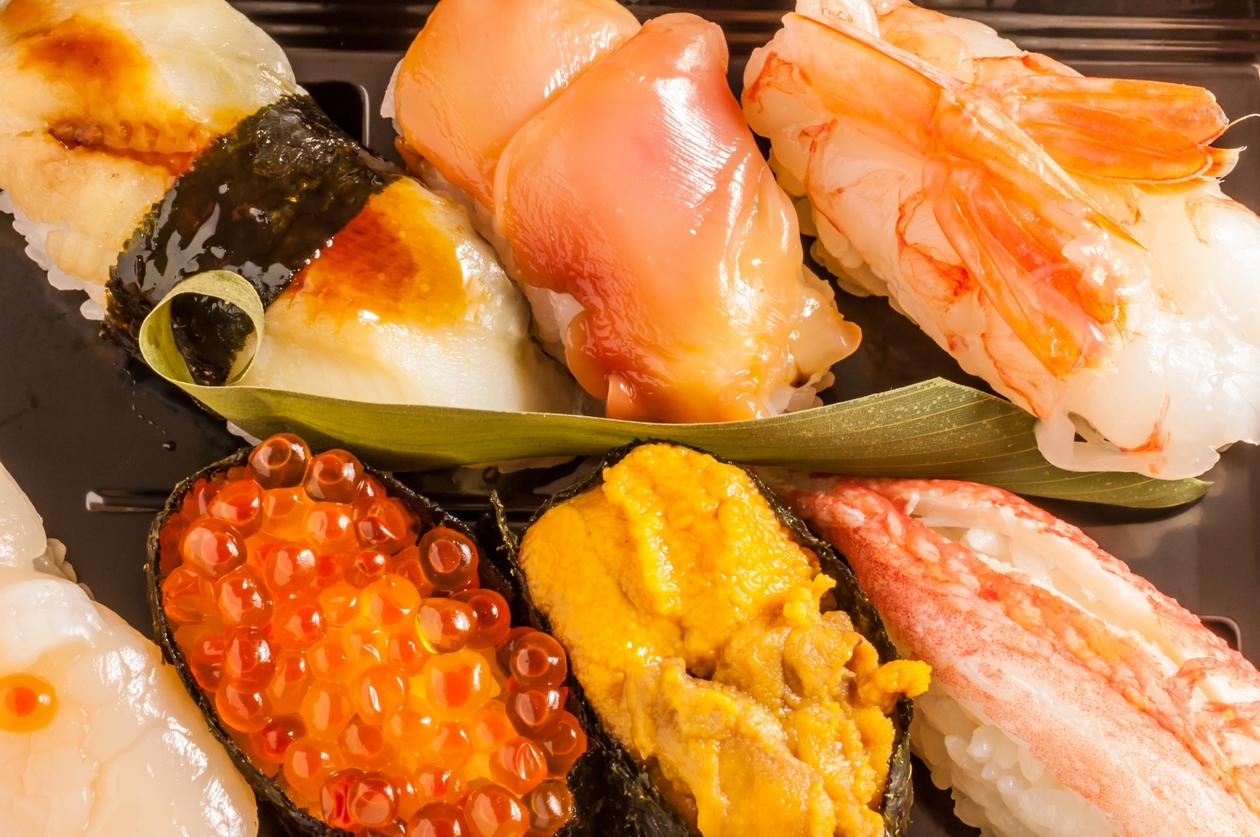
Let’s learn about local Japanese dishes! I have learnt about sincerity and hospitality of Japanese people through this experience of making Nara’s traditional local food “kakinoha-zushi” at the long established shop of kakinoha-zushi, “Hiraso.”
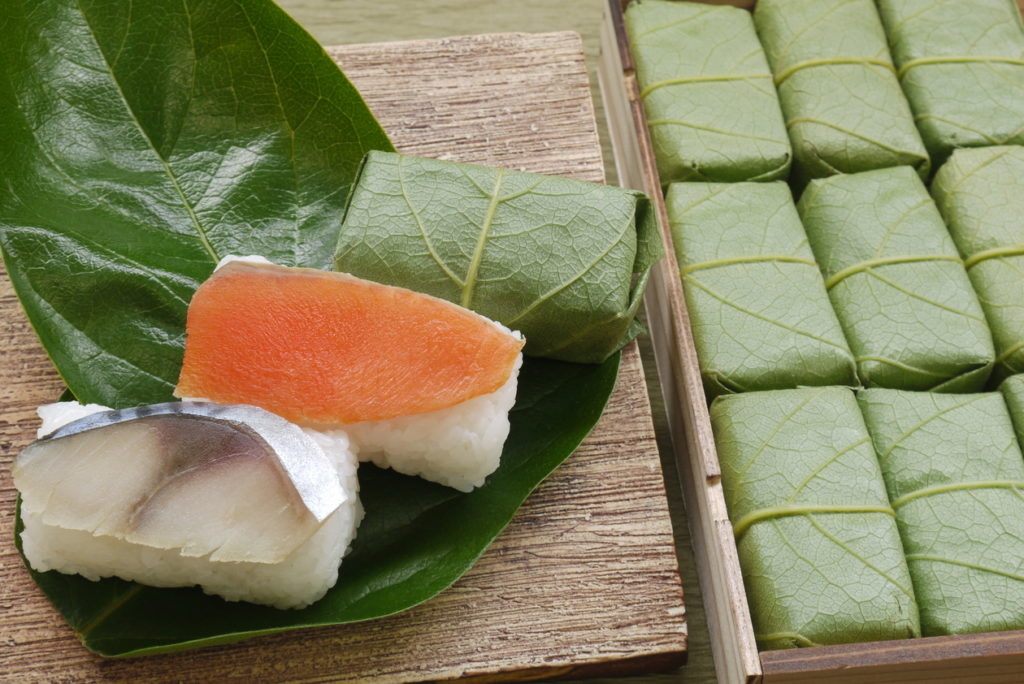
With over 150 years of history, well-known kakinoha-zushi shop “Kakinoha-zushi sohonke, Hiraso”
Established in 1861, Kakinoha-zushi sohonke “Hiraso” has over 150 years of history. Kakinoha-zushi, which has been served as a treat of summer festival in Yoshino region of Nara is now well-accepted as a specialty of Nara.
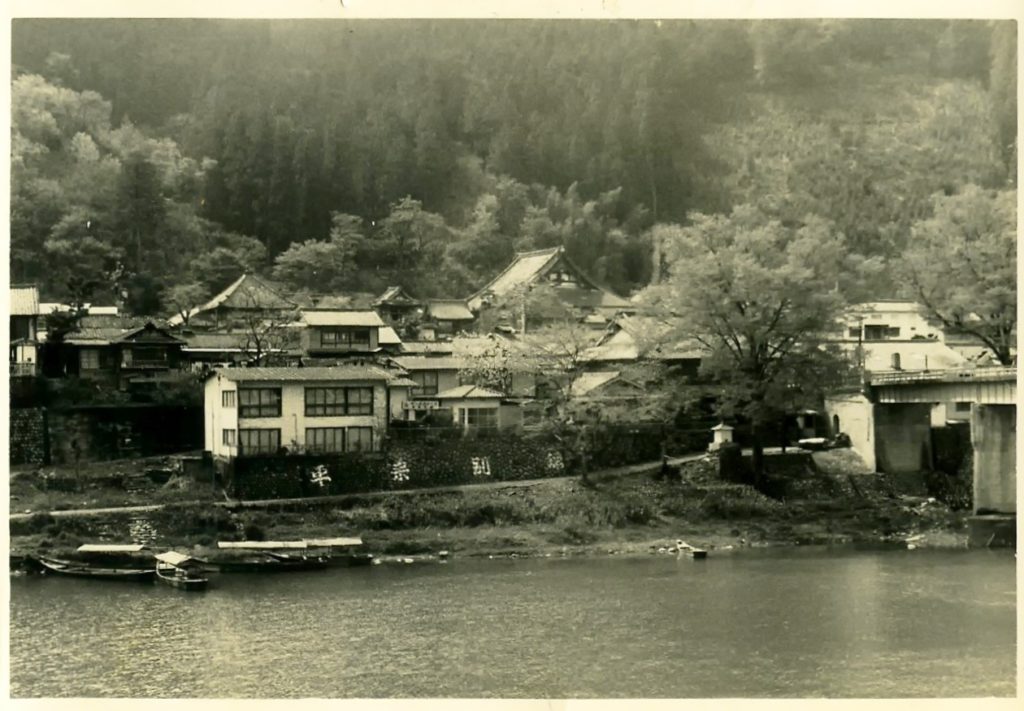
Located in the mountainous area of Nara, Yoshino is far from the sea. Therefore, seafood was rare and precious food. In those days, mackerels caught in Wakayama was salted in order to prevent them going stale, and were carried to Yoshino.
Those mackerels were thinly sliced, mixed with vinegared rice and wrapped with Nara’s special persimmon leaves. Then, it was placed in the wooden pail to be well-preserved with a weight stone on it. This was how oshizushi was made. With salty flavor and oil of mackerels and fragrance of persimmon leaves permeating well into vinegared rice, it is a gentle and mild flavored sushi.
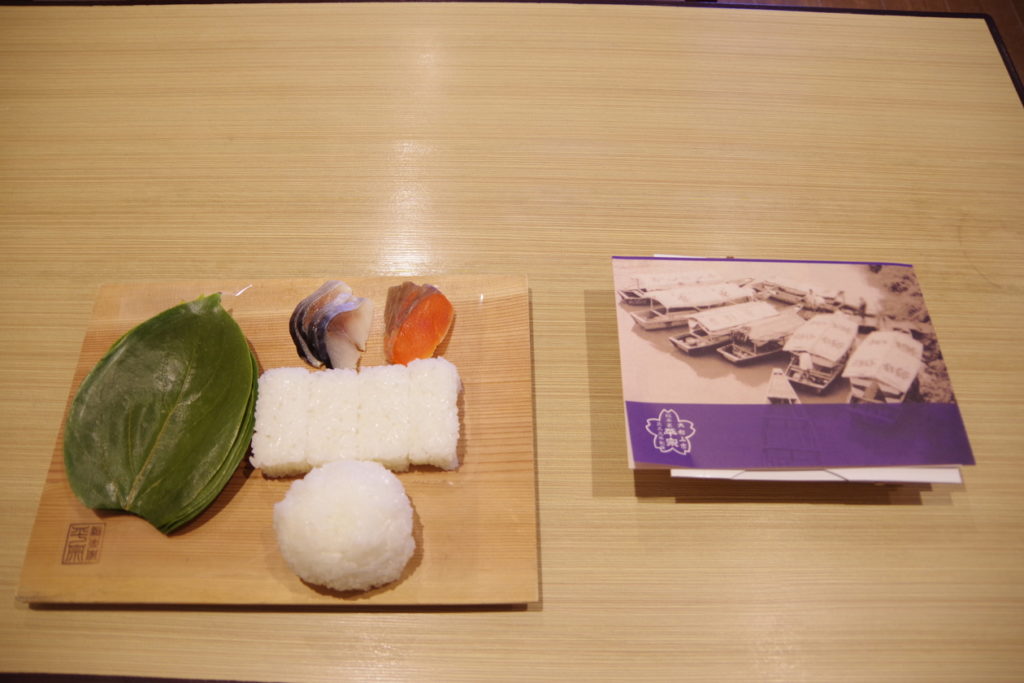
Let’s try to make “kakinoha-zushi,” a specialty of Nara, at “Hiraso!”
Hiraso offers cooking experience of “kakinoha-zushi” a traditional feast of Yoshino.
It takes around 45 minutes and you can make 8 pieces of kakinoha-zushi in total. Two kinds of fish, mackerel as a standard ingredient, and salmon which is popular among ladies and children, are used for cooking.
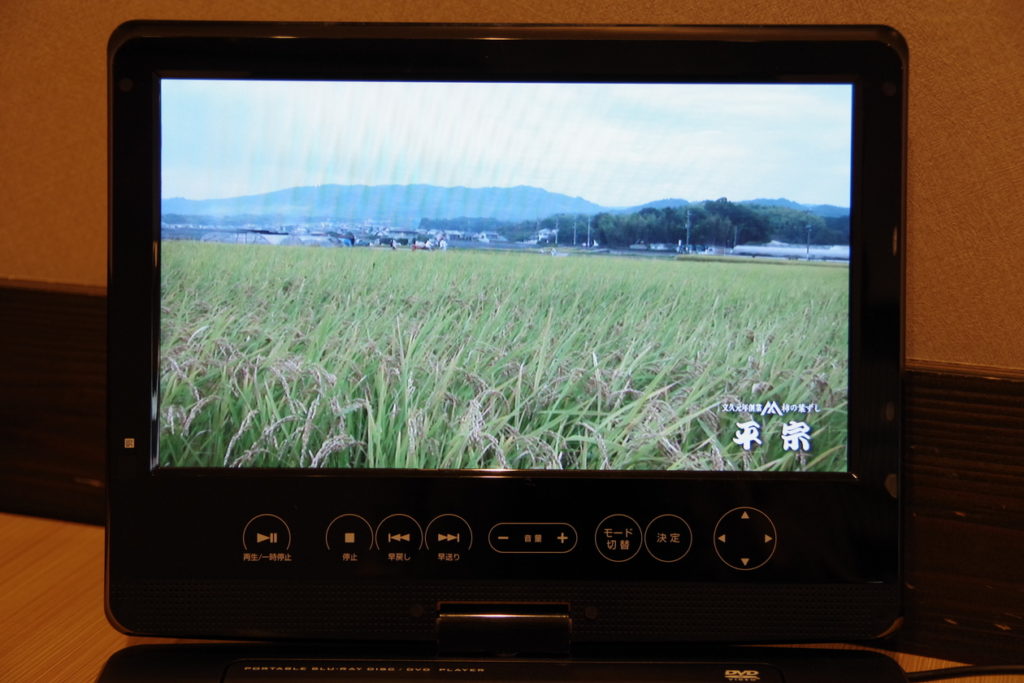
At first you watch the documentary video regarding local people of Nara and kakinoha-zushi.
This was filmed by “KAWASE Naomi,” the director who has won many awards including ones of the Cannes International Film Festival and is famous throughout the world. You can sense the hospitality of locals from this film.
Kakinoha-zushi is a local specialty filled with mother’s love and warm caring heart. You would feel kind heart of locals in its making process, that is, to wrap the feast made with “mackerels” as precious seafood and rice which locals grew with their love and care with persimmon leaves and stand it carefully.

After watching the video, making “kakinoha-zushi” has finally started. On the table, they are prepared that vinegared “Hinohikari” which is a kind of rices grown in Nara basin, thin sliced mackerel and salmon, and persimmon’s leaves.

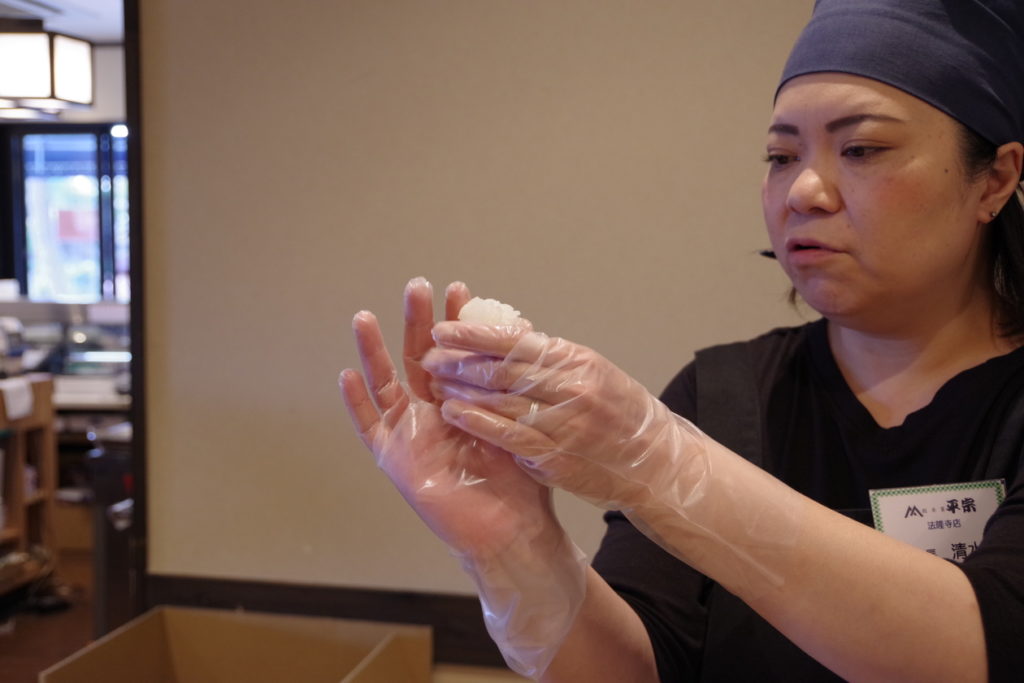
First, you divide rice into four parts, then you mold them with thumb and pointer finger. You might feel like being a Sushi chef.
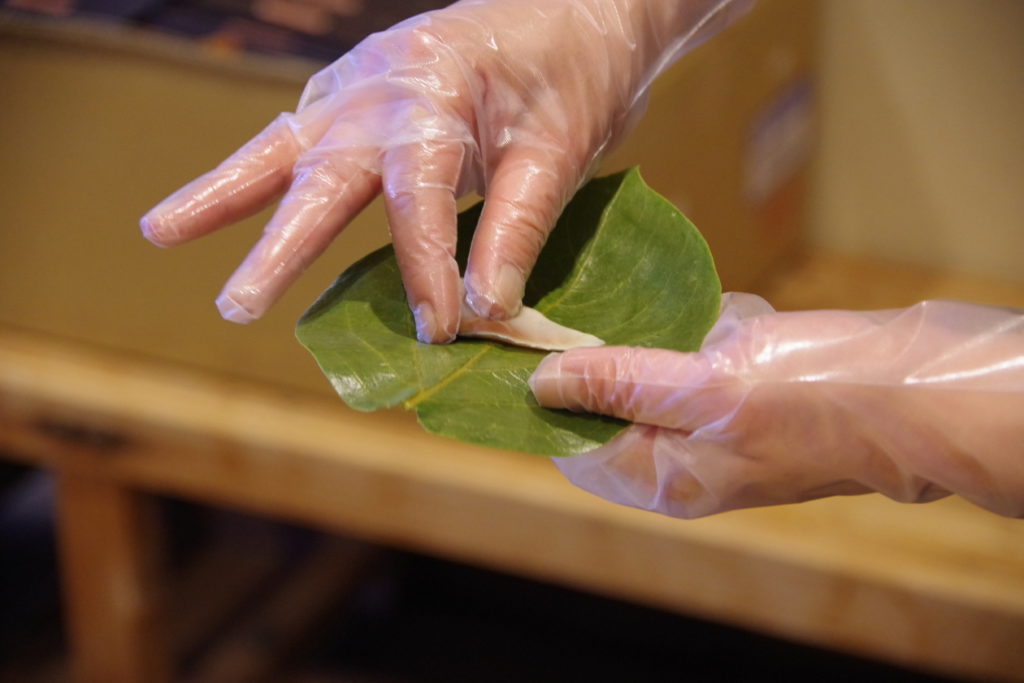
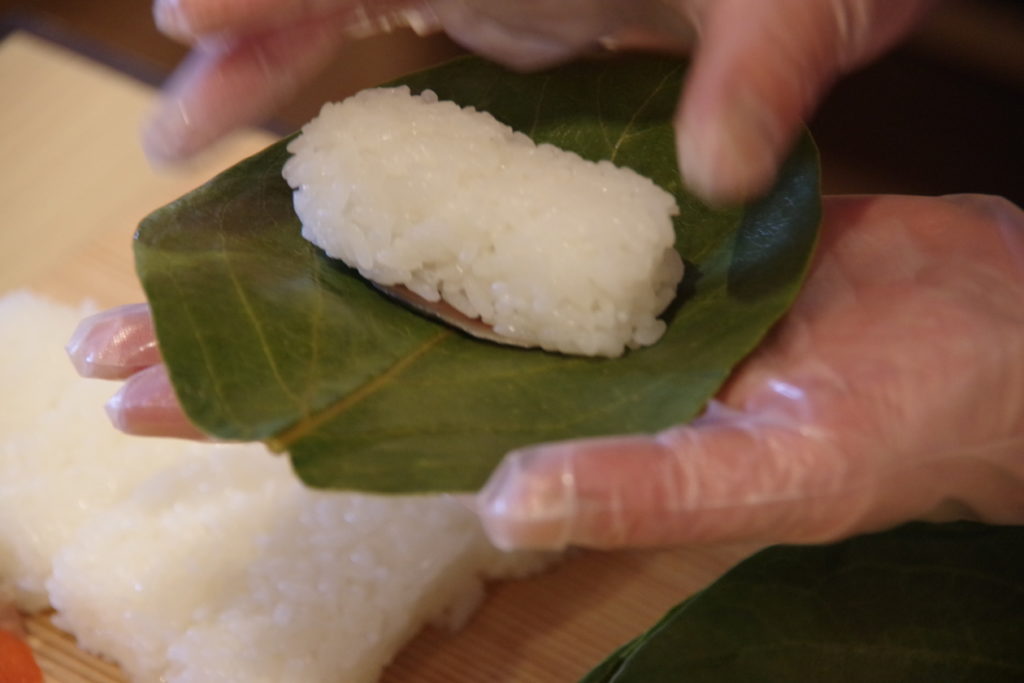

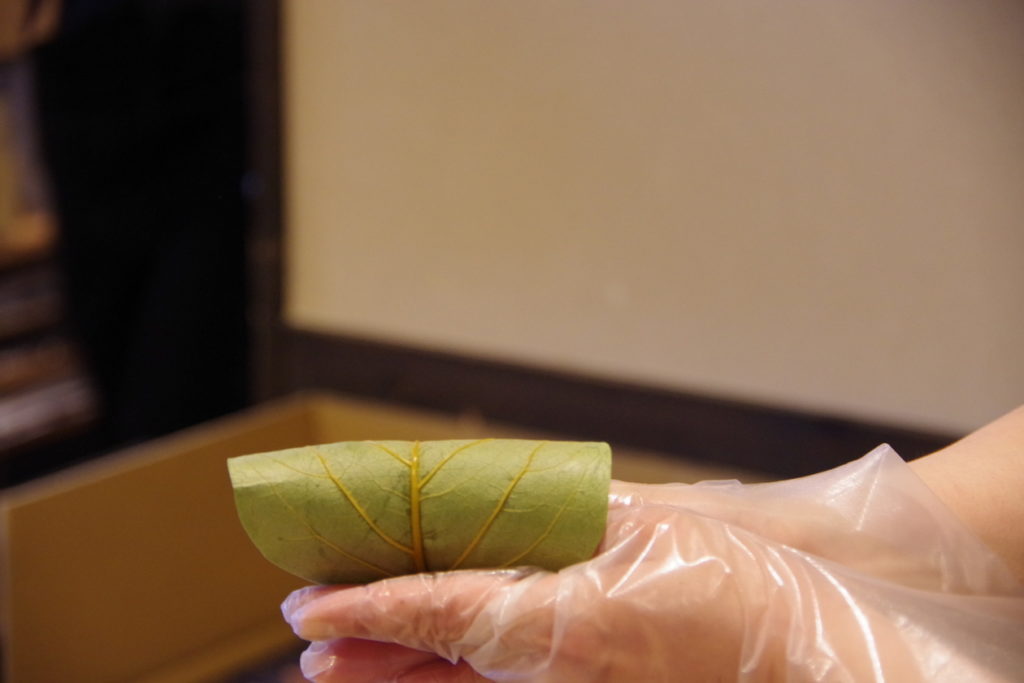
Once you make rice nice and neat, place a slice of fish on the right side of the leave, put rice on top of it, and then, wrap it. By wrapping it carefully not to get the air in it, flavors of fish, vinegared rice and persimmon leaves are well-mixed, and it gives kakinoha-zushi a deep flavor.


After wrapping, put them in the special wooden box nicely. By making the veins of leaves in the same direction as well as making 8 even square-shaped sushi, they fit neatly in the box. Dividing them according to kinds of fish, it is easy to find the one you want to eat.

As of November 2019, precious Yoshino cedar is used for the lid of wooden box. Since its fine fragrance moves to kakinoha-zushi, you can enjoy those having even fresher and richer smells.
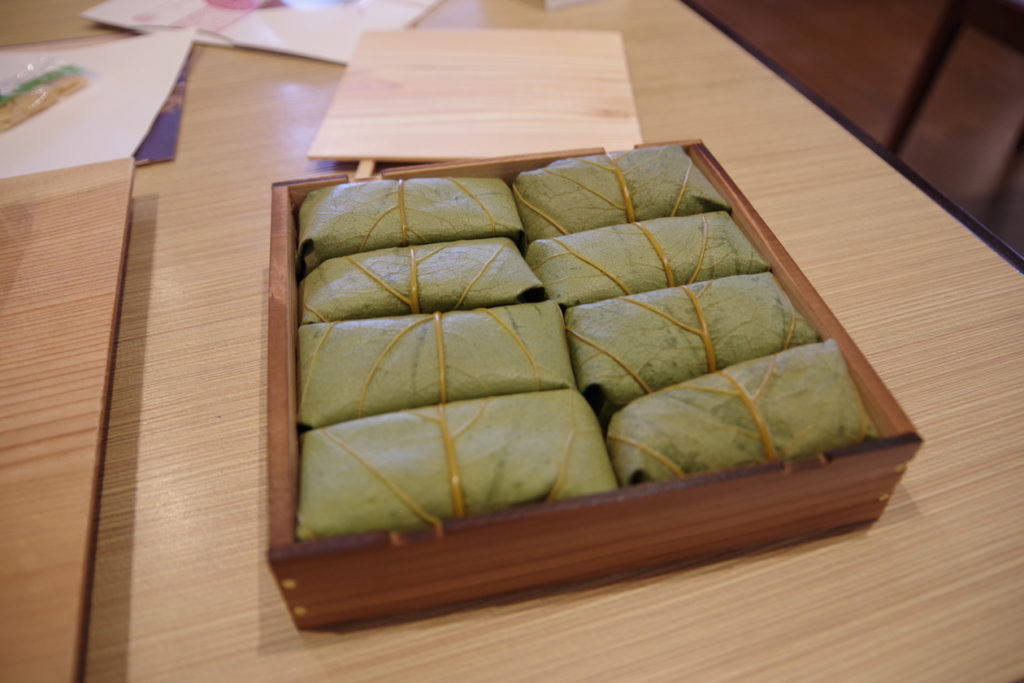
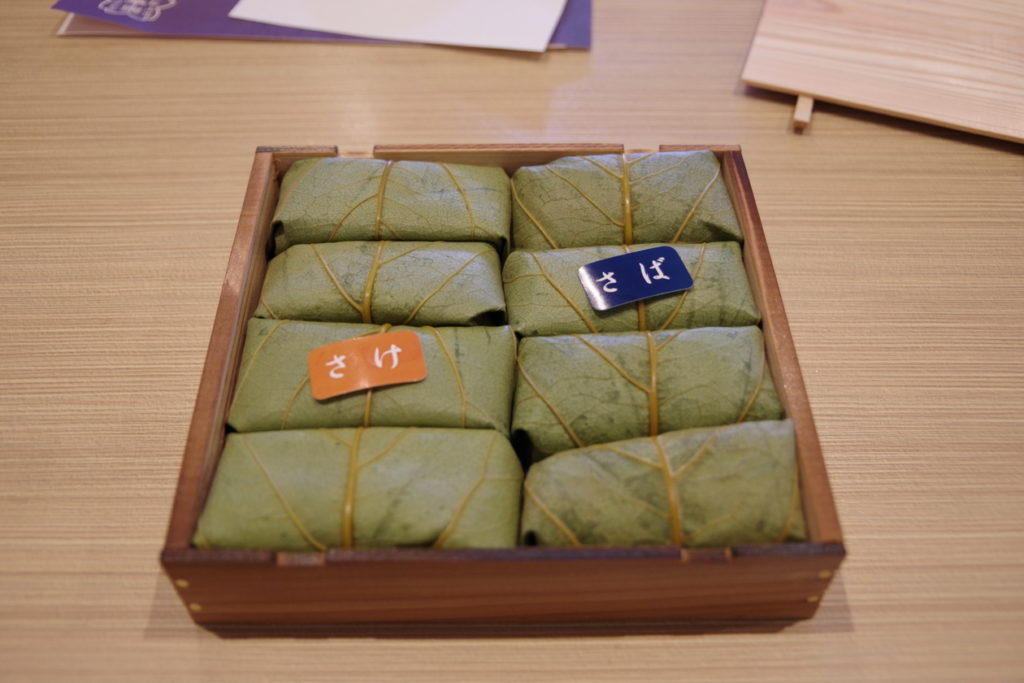
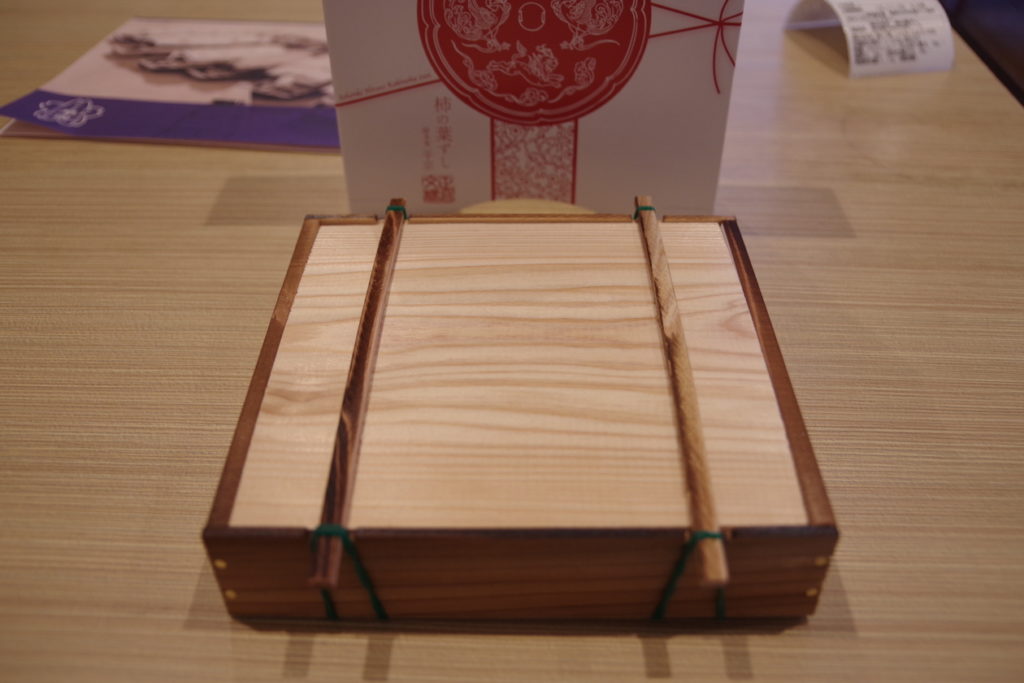
Put all of them in the box, put the lid on, and put a rubber band around the box, kakinoha-zushi making is over. You can take it home in the special box.
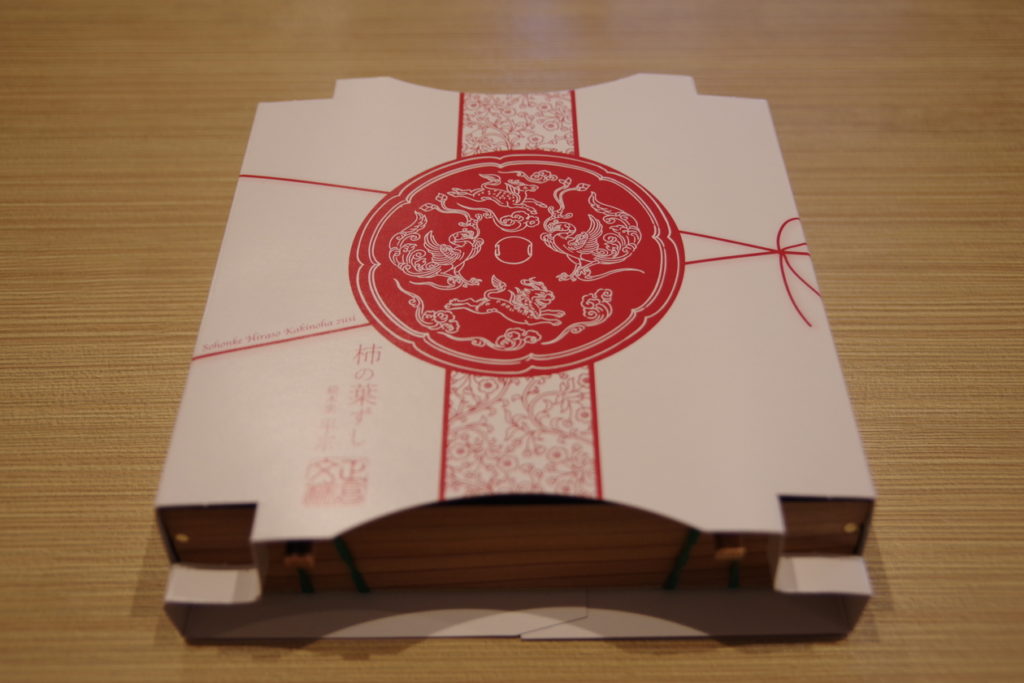
The best way to eat “kakinoha-zushi” you made.
Not like nigari-zushi, kakinoha-zushi’s umami essence gets mellow by making it stand for a while. So, don’t eat it immediately after cooking, but wait till next day. After arriving at your hotel, it is better to keep it in the fridge.
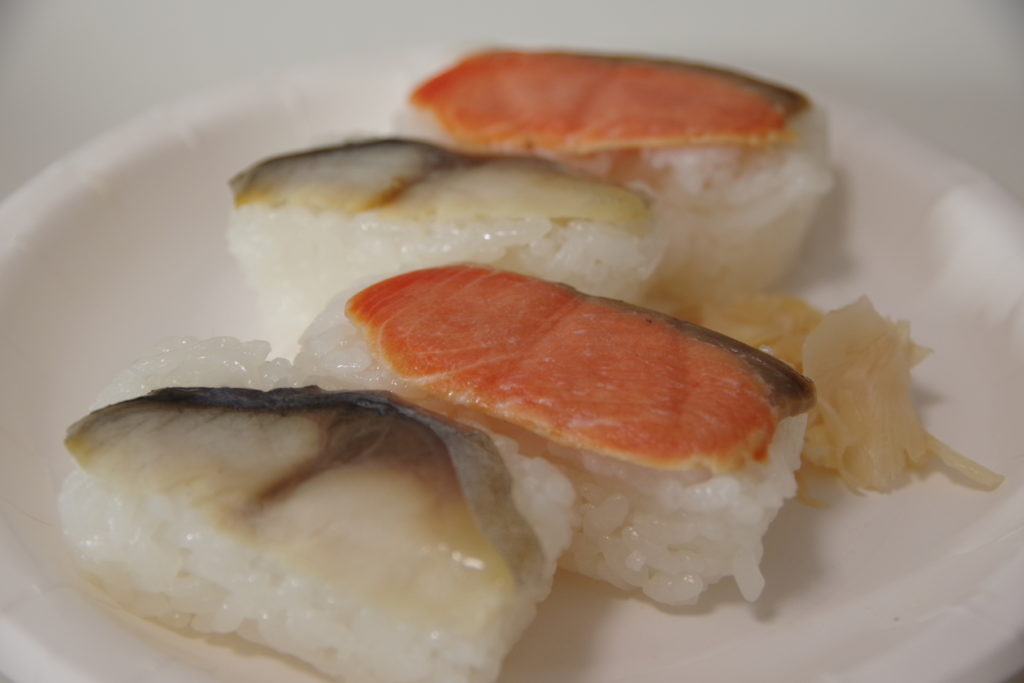
To enjoy delicious kakinoha-zushi, take it out from the fridge one hour before eating.
If you have a microwave or a toaster, warm it up to make the fish old goes into vinegared rice. Then, the fragrance of persimmon leaves outstand. If using a 600-watt microwave, they should be heated up for 10 to 20 seconds without taking leaves off, and if using a toaster, 15 minutes.
Having an advice, I tried warmed up kakinoha-zushi for the first time, and that one was the best ever.
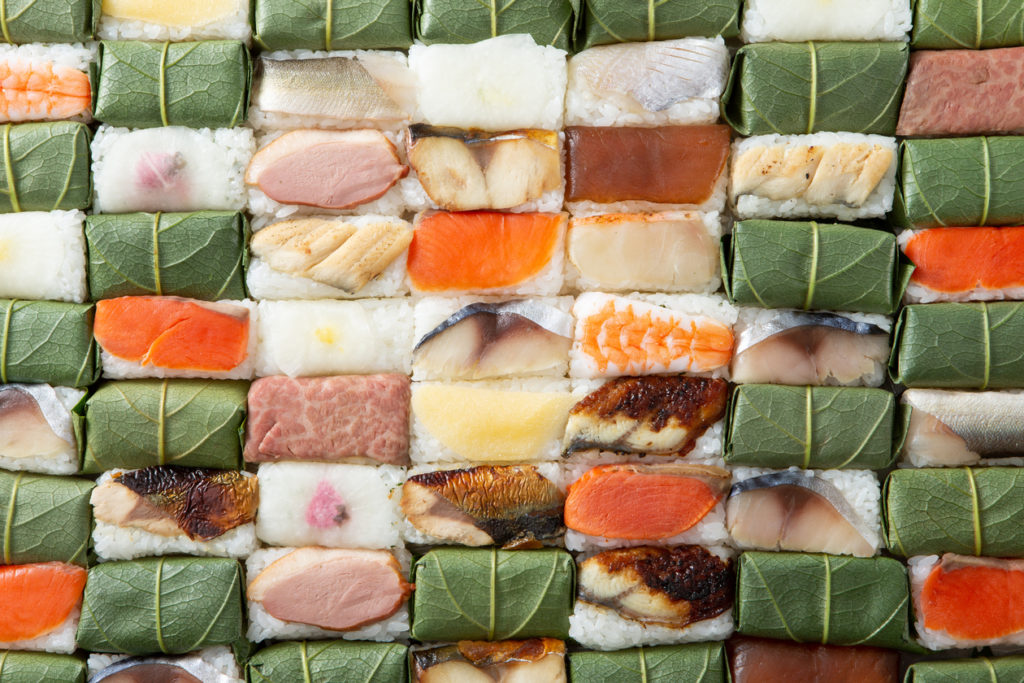
“Kakinoha-zushi,” the feast of Nara created with wisdom of Japanese
Although nigiri-zushi with raw fish is widely known as Japanese sushi, like kakinoha-zushi, oshizushi, which tastes better after standing for one day, is also popular.
It tastes different from nigari-zushi, and has a deeper flavor. Being in the country surrounded by the sea and having sufficient seafood, Japanese people have called on all of their wisdom since long ago to find a way to carry precious seafood to the areas far from the sea without spoiling it, so that, people in those areas can still eat delicious seafood.
So, it can be said that kakinoha-zushi is the feast created with the wisdom of Japanese people.

This kakinoha-zushi making experience took place at “Hiraso Horyuji branch” close to “Horyu-ji” temple which is the first world heritage site in Japan. How about experiencing traditional food culture of Nara after enjoying world heritage site “Buddhist constructions around Horyu-ji temple” which is said as the foundation of religious architecture of Japan?
| Shop Name | Kakinoha-zushi Hiraso Horyuji banch |
| Tel | +81-745-75-1110 |
| Address | 1-8-40 Horyuji, Ikaruga-cho, Ikoma-gun, Nara-ken |
| Map | |
| Schedule | 10:00/15:00/16:00 |
| Fee | ¥1,815 |
| Payment | Credit cards, E-money are accepted |
| Closed | None (Except busy season/ Please call us for details.) |
*The information herein is as of January 2020.


